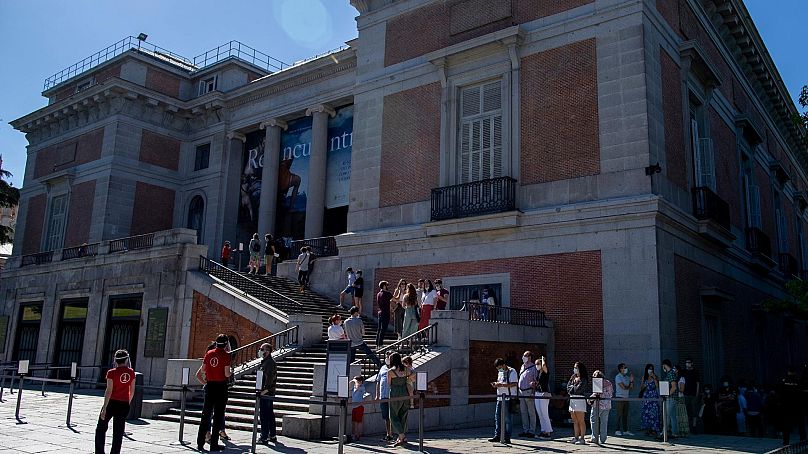The scents of flowers, animals and gloves can be sniffed in a 17th century painting at the Museo del Prado in Madrid.
A museum in Madrid has made a classic painting that you can smell.
The Museo Nacional del Prado in Madrid, Spain has created a unique exhibition around the painting “The Sense of Smell” by Jan Breughel and Rubens.
“The Sense of Smell” depicts a garden, featuring trees, plants and animals. The painting’s original goal was to evoke the immense range of smells a human can distinguish.
But the Prado Museum has gone one step further. By partnering with the Perfume Academy Foundation and fashion company, Puig, the museum has created ten distinct scents to bring the painting to life for visitors.
Bringing 10 fragrances to life
Using “AirParfum”, a technology developed by Puig, the perfumer Gregorio Sola created ten fragrances to coincide with different elements of the painting.
Thanks to four diffusers, the fragrances can be smelt as visitors interact with a touchscreen in front of the work.
You can lean in and catch notes of orange blossom essential oils, the luscious floral aroma of jasmine or the green humid fragrance of a fig tree, along with its wooden barky notes.
There are also the fragrances of roses, irises, spikenard, and daffodils as part of the display. To recreate the smell of daffodils, 1,300 kg of flowers were picked to create the intoxicating scent.
Giving the painting more animalistic flavours is the smell of an African civet, a viverrid mammal native to sub-Saharan Africa.
The civet has a sac between its hind legs that secretes a thick yellowish musky fluid that was historically used in creating fine perfumes because of its stabilising properties.
However, too much of the civet scent and you could be overwhelmed by the smell of animal excrement. In the exhibition, they used a synthetic substitute.
You can also notice the odour of a pair of leather gloves to accompany a beautiful pair that Rubens added to the work.
And finally, one of the fragrances in the piece is known simply as “Allegory”. Inspired by the bouquet of flowers in the painting that the allegorical figure of smell holds in her right hand, the perfume contains jasmine, rose and spicy elements.
The artists behind the smells
"When one looks at historical documents, including inventories, letters, documents of all kinds, perfume and the sense of smell in general have a greater precedence than we have generally acknowledged," Alejandro Vergara, senior curator at the Prado Museum tells Euronews.
The painting is one of a five-part series called “The Five Senses” by Jan Breughel. Painted between 1617 and 1618, Breughel wanted each work to evoke the power of the individual senses: sight, sound, smell, taste, and touch.
Breughel was an incredibly well-respected Flemish painter in his time. He had trained under his grandmother, the miniaturist Mayken Verhulst and his father Pieter Bruegel while living in Rome, Naples and Milan.
Breughel painted “The Sense of Smell” with the help of his friend Rubens, who contributed the allegorical figures to the work.
Peter Paul Rubens was also a highly regarded painter of his era. Considered one of the most influential artists of the Flemish Baroque tradition, he often worked together with Breughel on projects.
The senses series was likely commissioned by Isabella Clara Eugenia and her husband Archduke Albert of Austria, the then rulers of the Spanish Netherlands.
The smell of success
For the Museo Nacional del Prado, the experiment with bringing smell to an exhibition has been a resounding success.
"It is a small room. So it's not one of these exhibitions with huge numbers," Vergara explains.
"But we've multiplied the amount of people that go to that room by 20," he says. "The response both in Spain and around Europe has been very large and very enthusiastic. So we're very happy with that."












